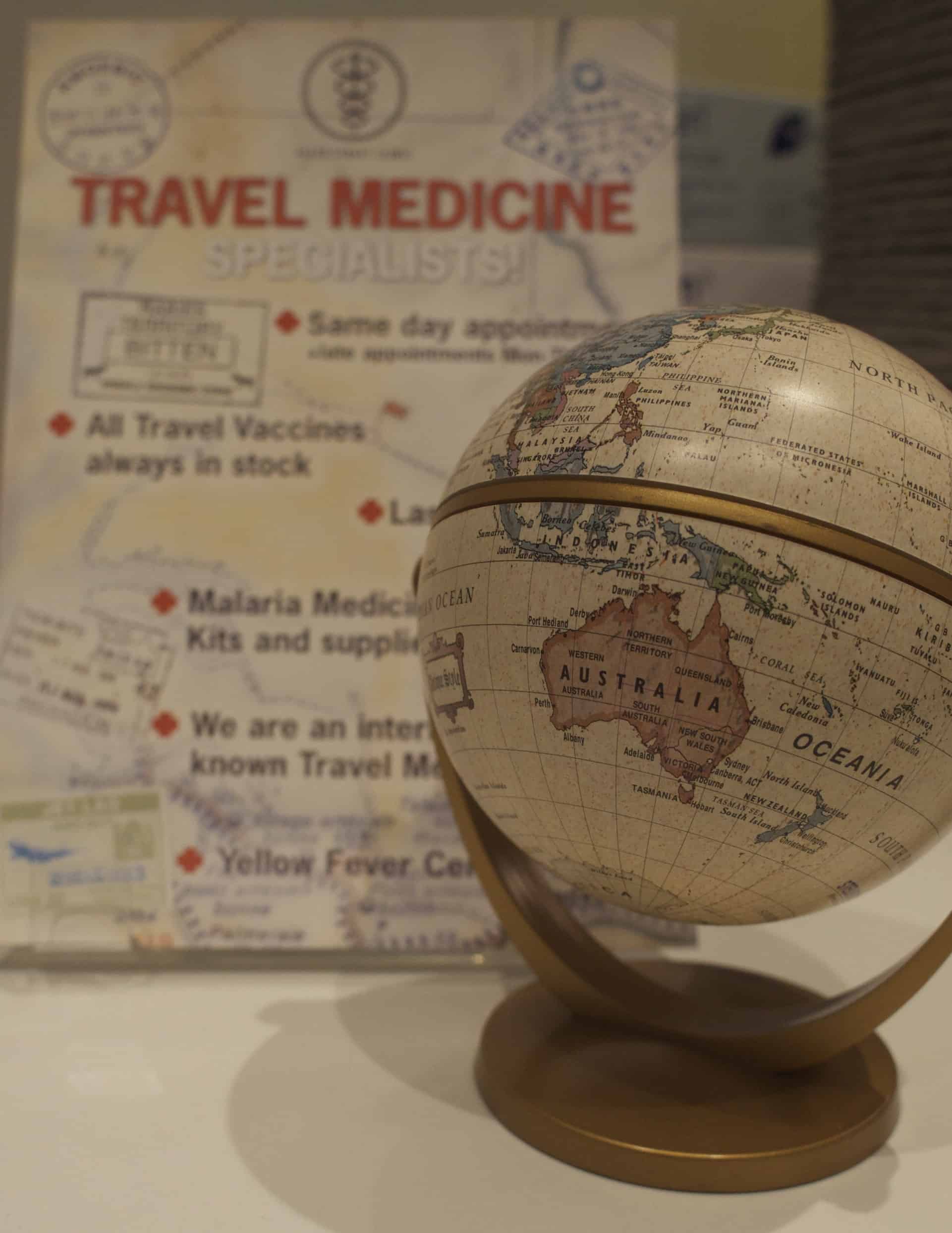Tag: Sea Sickness
Greenland is home to truly magnificent mountainscapes and glaciers.
Jakobshavn Glacier, the world’s fastest-moving glacier in the Northern Hemisphere can be found here.
In the Winter, tourist travel to this wonderland to potentially see the wondrous the Northern Lights. Things are quite different in the Summer.
Chasing the Midnight Sun
Summer in Greenland is an image not often associated with the country. Summertime offers eternal light in the land of ‘The Midnight Sun’ whereby the day has neither a beginning nor an end. Those wanting to experience this time-shifting experience must travel north or the Arctic Circle. The low-lying sun makes the surrounding scenery appear almost dreamlike; icebergs and hilltops are bathed in a surreal palette of pink, purple, yellow and red. Travellers to Greenland have options of hiking the land or sailing the fjords between icebergs.
If you plan to travel to Greenland this summer follow our top travel tips to ensure you stay healthy.
Vaccinations
Even though Greenland resides in the Arctic Circle, travellers should still ensure they receive appropriate pre-travel vaccinations. This includes being up-to-date with Measles, diphtheria-tetanus and polio. Greenland has a high risk of Rabies, a virus spread through the infected bite of a mammal. Travellers who plan to trek inland may wish to consider this vaccination before they travel to reduce the risk.
Suncare
Despite Greenland having long, dark winters, the summer months provide almost constant light. Bright sun, combined with the effects of lights reflection from snow and water can increase the risk of sun damage from UV light. Despite temperatures remaining cold, travellers still need to be sun smart. Ensure you wear a high factor SPF, and use lip balm to prevent cracking. Polarised sunglasses that wrap around will prevent the UV rays causing damage to your eyes.
Sea Sickness
Many activities in Greenland involve taking to the water and visiting the infamous Disko Bay in search of Icebergs. Sometimes the seas can be rough which can make for a miserable time if you are prone to travel sickness.
Sea Sickness can be reduced by:
-
Sit in the centre of the boat where the motion will be less aggressive
-
Close your eyes or focus on a point on the horizon, this can help your inner ear balance.
-
Avoid alcohol and large heavy meals, instead, keep hydrated on water and eat smaller lighter meals
-
Sucking on a mint or ginger sweet can help with nausea
-
Seas Sickness medication tablets
-
Patches that can be used to prevent sea-sickness
Trekking
Parts of Greenland can be remote so taking a good First aid kit with you is essential. Basic provisions include pain relief, plasters and medication to treat an upset stomach, such as loperamide and oral rehydration salts. If you take prescription medication to ensure you pack enough and carry the prescription with you. If you plan on trekking the hinterland, pack additional items such as blister dressings and plasters.
Book your travel appointment today
By Anna Chapman | Travel Nurse | July 2019
The Blue Hole in Belize is famous for being a natural wonder with a unique diving experience. It’s world-class diving rates as one of the top 5 diving sites in the world. Belize is a great travel destination for the adventure traveller.
Avoid getting that sinking feeling by following our top 5 tips for staying healthy…
1 – Vaccinations are important.
Ensure you are up-to-date with your travel vaccinations including diphtheria, tetanus and polio and Hepatitis A. Speak to a travel nurse before you travel to ensure you are protected for your trip, especially if you have multiple destinations planned.
2 – Pack a small first aid kit.
A small first aid kit packed with travel essentials will cover you for minor injuries. Forceps or tweezers are useful for removing foreign bodies, such as sea urchin spines, and antiseptic wash or cream can be used to treat any coral cuts or abrasions. We stock a perfect essential first aid kit on our online shop.
3 – Be sun-safe to avoid sunburn.
Be conscious of how much sun exposure you get. The Caribbean sun can be strong with an increased risk of sunburn if you’re not careful. Wear sunscreen in between your dives with a protection level of at least SPF50 and spend time in the shade, especially in the midday sun between 11am and 3pm. Cover up with clothes, a hat and sunglasses to protect your skin, scalp and eyes.
4- Keep hydrated.
Although you are surrounded by water, diving and the sun exposure can cause dehydration. Ensure you drink plenty of fluids to prevent it. It is best to avoid drinking tap water directly, unless using a water bottle with a filter or chlorine dioxide tablets, both of which will make the tap water safe to drink. Another alternative is to buy bottled water with a seal although, those trying to reduce their plastic footprint should opt for the former options.
5 – Avoid sea sickness.
The journey from the mainland to the blue-hole can take up to 3 hours and is often crossing bumpy seas. If you are prone to travel sickness you may want to ensure you pack some medication to prevent this so not to interrupt your experience.
Book your travel appointment today
By Anna Chapman | Travel Nurse | February 2019
Holidaying in the Greek Islands this year?
Island hopping in Greece is an enchanting way to explore the country’s vast collection of 6,000 islands. With whitewashed houses, tavernas and beautiful beaches at every stop, it’s a trip everyone should take once in their life.
There are many ferry routes between the mainland and islands. Some people can manage travelling by boat, whereas others may suffer from sea sickness. Days or weeks on a boat can be miserable for those who are prone to sea sickness, yet there are effective treatments and tips for those who are vulnerable to reduce the risk.
What is Sea Sickness?
Sea sickness is similar to motion sickness, caused by repetitive movements when travelling, like floating up and down on a current. The inner ear sends signals to your brain as well as signals from your vision, with the two signals contradicting each other it confuses the brain. These confusing messages cause you to feel unwell and can cause dizziness, vomiting and nausea.
Despite being common, those prone to travel sickness may wish to take sea-sickness medication with them if they intend to do any island hopping. There are some tips that you can take on board and put your body and mind at ease:
Prevention
- Sit in the centre of the boat where the motion will be less aggressive
- Close your eyes or focus on a point on the horizon, this can help your inner ear balance.
- Avoid alcohol and large heavy meals, instead keep hydrated on water and eat smaller lighter meals
- Sucking on a mint or ginger sweet can help with nausea
- Seas Sickness medication tablets
- Patches that can be used to prevent sea-sickness
The Fleet Street Clinic stocks travel sickness medication, medical travel kits and our experienced travel clinic nurses can help advise.
Book your travel appointment today
By Anna Chapman | Travel Nurse | June 2018





